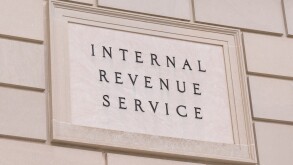The taxable temporary differences will be in the scope of IRE if they arise from:
The initial recognition of goodwill; or
The initial recognition of an asset or liability in a transaction which:
Ø Is not a business combination: and
Ø At the time of the transaction, affects neither accounting profit nor taxable profit (tax loss)
The IRE is not applicable for taxable temporary differences related to investing in subsidiaries, branches or associates, as well as having interest in a joint venture.
The origin of the IRE is the today superseded “income statement” approaches to accounting for deferred tax. Based on this approach, deferred tax was not recognised on permanent differences (income or expenses that appeared in either the financial statements or the tax return but not in both).
The IRE appliance seems to be aimed more at permanent differences under the income statement approach.
This example shows the appliance of the IRE:
| Purchased Asset value |
Depreciation annual rate |
Useful life |
Residual value |
Income tax rate |
Notes |
$1,000 |
20% |
5 years |
$0 |
30% |
Depreciation is not deductible for tax purposes. On disposal any capital gain will be taxable or any capital loss will be not deductible. |
Option 1 – Absent or IRE
| Book value |
Tax value |
Taxable temporary differenceTax value – book value |
Income tax rate |
Deferred tax liability |
Notes |
$1,000 |
$0 |
$(1,000) |
30% |
$(300) |
Recognise a deferred tax expense of $300 in income statement might be meaningless since there is any loss simply by purchase of a non-deductible asset. |
Option 2 – Gross up the asset by adding the income tax
| Book value |
Related Deferred Income tax |
Gross up amount of the asset with the related deferred income tax |
Notes |
$1,000 |
$300 |
$1,300 |
Recognise a deferred tax expense of $300 by adjusting the carrying value of the book value of the asset. IAS-12 states that adjusting the carrying value of the book value with the related will make the financial statements “less transparent”. |
Option 3 – Gross up the asset to the amount to have an equivalent to the earned pretax profits related to the asset
| Book value |
Gross up factor 1 -30% |
Gross up amount of the asset with the related deferred income tax $1,000/70% |
Notes |
$1,000 |
70% |
$1,428 |
Recognise a deferred tax expense of $428 by adjusting the carrying value of the book value of the asset. IAS-12 states that adjusting the carrying value of the book value with the related will make the financial statements “less transparent”. |
Option 4 – Do not recognise any deferred tax liability at all.
The IRE is represents the least bad of the previous four options, for dealing with “day one” temporary differences
In a transaction where the IRE does apply to the goodwill as following:
Business combinations: The initial recognition of goodwill because the deferred tax asset or liability form part of the goodwill arising or the bargain purchase gain recognised.
Ø At the time of the transaction, affects neither accounting profit nor taxable profit (tax loss)
IRE does not apply to transactions affecting taxable profit or accounting profit (or both) because those kind of transactions are not permanent items.
Lessons
IAS 12 states the IRE in order to have a valid tax accounting treatment to justify the non-recognition of a deferred tax liability related to the initial (“day one”) recognition of certain taxable temporary differences. For example: the goodwill and assets or liabilities whose source is not a business combination, or at the time to acquire the asset or assume the liability the transaction does not affect neither accounting profit nor taxable profit. or, at the time of the transaction, affects neither accounting profit nor taxable profit.
The IRE represents the best option for dealing with “day one” taxable temporary differences.
The IRE does not apply to transactions affecting taxable profit or accounting profit (or both).
Gustavo Gómez (gustavo.gomez@mx.ey.com), Tax partner, EY Mexico
José Antonio Abraján (jose.abrajan@mx.ey.com), Deferred taxes Senior Manager, EY Mexico,
The principal Mexican correspondents of the Compliance Management channel on www.internationaltaxreview.com
EY’s other tax compliance partners in Mexico City are:
Hector Armando Gama Baca (hector.gama@mx.ey.com)
Fernando Tiburcio Lara (fernando.tiburcio@mx.ey.com)
Juan Manuel Puebla Domínguez (juan-manuel.puebla@mx.ey.com)
Raúl Tagle Cázares (raul.tagle@mx.ey.com)
Raúl Federico Aguilar Millán (federico.aguilar@mx.ey.com)
Ricardo Delgado Acuña (ricardo.delgado@mx.ey.com)









